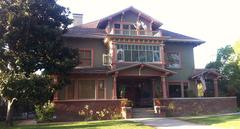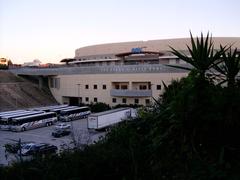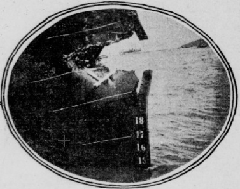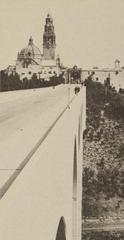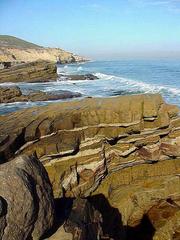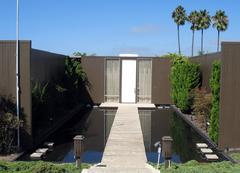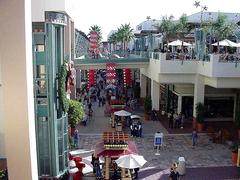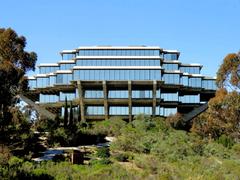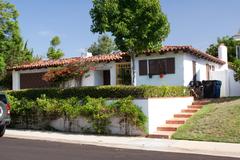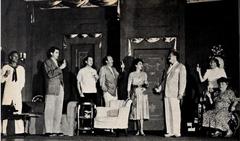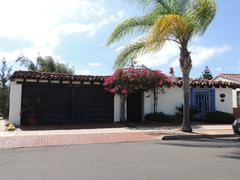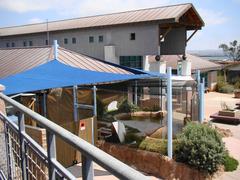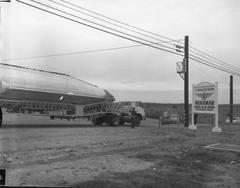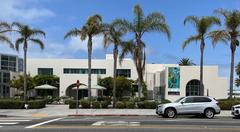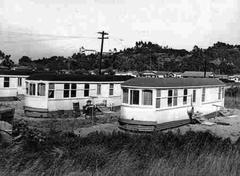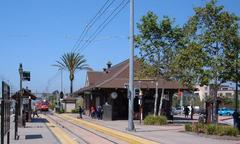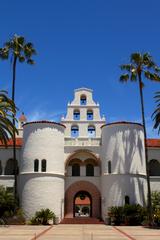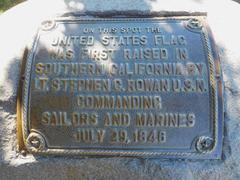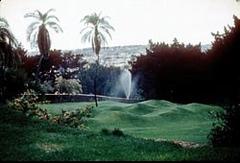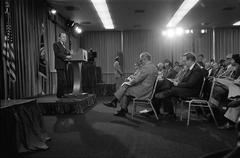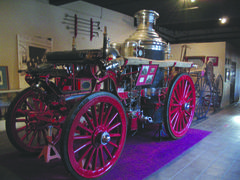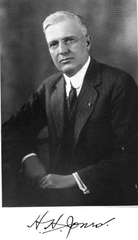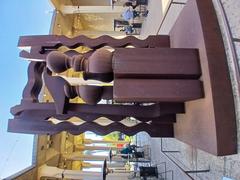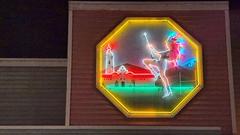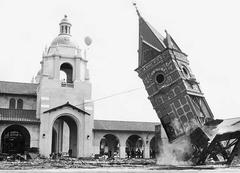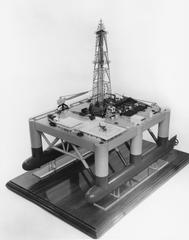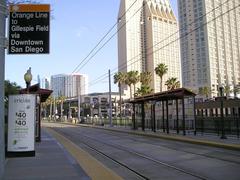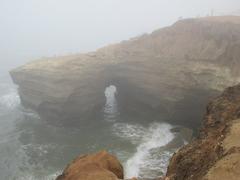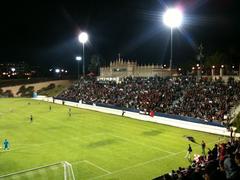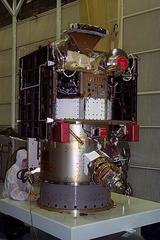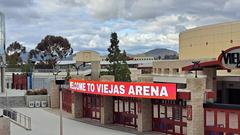Georgia Street Bridge Visiting Hours, Tickets, and San Diego Historical Sites Guide
Date: 14/06/2025
Introduction
The Georgia Street Bridge stands as an enduring symbol of San Diego’s early 20th-century transformation—blending engineering innovation with architectural elegance. Built in 1914 to span University Avenue, this historic concrete arch bridge links the vibrant neighborhoods of Hillcrest and North Park. Originally designed to meet the city’s evolving transportation needs, the bridge has become an iconic landmark, celebrated for its Beaux Arts and Mission Revival features and its place within the City Beautiful movement. Recognized as San Diego Historic Landmark No. 325 and listed on the National Register of Historic Places, the bridge today invites visitors to explore both its historic legacy and its dynamic urban setting (San Diego City Planning PDF, San Diego Reader, San Diego Tourism Authority).
This comprehensive guide presents the Georgia Street Bridge’s rich history, architectural significance, restoration efforts, and practical visitor information—offering tips on accessibility, best times to visit, nearby attractions, and participation in local events. Whether you’re a history enthusiast, architecture lover, or urban explorer, the Georgia Street Bridge provides an immersive experience linking San Diego’s vibrant past and present.
Contents
- Introduction and Historical Overview
- Architectural Significance and Features
- Visiting Information
- Location & Accessibility
- Visiting Hours & Admission
- Tours & Events
- Restoration and Preservation Efforts
- Community Impact and Cultural Resonance
- Frequently Asked Questions (FAQ)
- Planning Your Visit
- Useful Links and Further Reading
Historical Overview
Constructed during San Diego’s rapid urban expansion, the Georgia Street Bridge was designed to separate surface street traffic from the electric railway below as part of the University Avenue Grade Separation Cut. This critical infrastructure allowed for safe, efficient travel and helped foster the growth of surrounding residential districts (San Diego City Planning PDF). The bridge’s completion coincided with the Panama–California Exposition, reflecting the era’s drive for civic beautification and modernization.
Architectural Significance and Features
The Georgia Street Bridge exemplifies Beaux Arts and Mission Revival styles, notable for its three-hinge, open-spandrel reinforced concrete arch. Originally adorned with elegant concrete lamp posts, the bridge’s defining elements now include monumental arches, decorative parapet walls with rhythmic arched cutouts, and robust pilasters anchoring either end (San Diego City Planning PDF). The bridge’s architectural integrity led to its listing as a San Diego Historic Landmark and on the National Register of Historic Places.
Key features include:
- Reinforced Concrete Arch: Provides both structural strength and visual elegance.
- Decorative Parapets: Semi-circular arch cutouts reduce weight and enhance aesthetics.
- Mission Revival Details: Smooth stucco finishes and ornamental elements reference regional architectural traditions.
Visiting Information
Location & Accessibility
- Address: Intersection of Georgia Street and University Avenue, San Diego, CA.
- Transit: Accessible via car, bike, or public transit. Multiple bus routes serve University Avenue.
- Parking: Limited street parking; public transit or ride-share recommended for convenience.
- ADA Access: Sidewalks and ramps are ADA-compliant, accommodating wheelchairs and strollers.
Visiting Hours & Admission
- Access: Open to the public 24 hours a day, seven days a week.
- Admission: No tickets or fees—completely free to visit.
Tours & Events
- The bridge is often highlighted in local walking tours focusing on San Diego’s historic infrastructure.
- Annual events such as the “7 Bridges Walk” include the Georgia Street Bridge (Chelsey Explores).
- For updated event info, check San Diego Tourism Authority or local historical societies.
Restoration and Preservation Efforts
Historical Context
By the early 21st century, the bridge faced structural deficiencies and seismic risks, prompting a major restoration from 2016–2019 (San Diego Union-Tribune, City of San Diego). The $14 million project, supported by federal and local funds, aimed to preserve the bridge’s historic character while upgrading its safety and usability.
Restoration Highlights
- Arch Reconstruction: Historic arches preserved; new deck built above original arches (Kleinfelder).
- Balustrade and Lighting: Restored to reflect the original 1914 design (San Diego Reader).
- Soil and Wall Stabilization: Retaining walls reinforced with modern engineering.
- Roadway Lowering: University Avenue beneath the bridge lowered for modern vehicle clearance.
- Pedestrian and Bicycle Upgrades: Widened sidewalks and improved access for safety and comfort.
Awards and Recognition
The restoration received accolades for historic preservation, seismic retrofitting, and engineering excellence (Kleinfelder).
Community Impact and Cultural Resonance
The bridge has long united Hillcrest and North Park, two neighborhoods known for their cultural vibrancy, arts, and dining scenes. Its presence on the “7 Bridges Hike” and in local events underscores its role as both a physical and symbolic connector (SanDiego.org). Restoration efforts were shaped by active community involvement and advocacy from local historical groups, ensuring the bridge remains a source of neighborhood pride.
Frequently Asked Questions (FAQ)
Q: What are the Georgia Street Bridge visiting hours?
A: The bridge is open 24/7 with free public access.
Q: Is an admission fee or ticket required?
A: No. The bridge is a public thoroughfare—no fees or tickets.
Q: Is the bridge wheelchair accessible?
A: Yes. ADA-compliant sidewalks and ramps ensure accessibility.
Q: Are guided tours available?
A: The bridge is included in many local walking tours. Check with neighborhood associations or tourism sites for schedules.
Q: Is parking available?
A: Limited street parking is available nearby. Public transit is recommended.
Q: Can I bring my pet?
A: Yes, leashed pets are welcome.
Planning Your Visit
- Best Time: Early mornings or late afternoons for optimal photos and fewer crowds.
- Activities: Photography, architectural appreciation, and access to nearby attractions like Balboa Park, University Avenue, Hillcrest, and North Park.
- Events: Participate in the “7 Bridges Walk” or community events held throughout the year.
- Visitor Etiquette: Respect the space, dispose of litter properly, and be mindful of others.
For the latest updates and interactive guides, download the Audiala app or visit San Diego’s official tourism sites.
Useful Links
- City of San Diego Historical Planning Documents
- City of San Diego - Georgia Street Bridge Project
- San Diego Tourism Authority
- Hillcrest Neighborhood Guide
- North Park Neighborhood Guide
- San Diego Historical Sites
- North Park Historical Society
- 7 Bridges Walk - Chelsey Explores
- Keim USA Project Gallery
Image suggestions:
- High-quality images of the bridge’s arches, restored balustrades, and historic lighting (alt text: “Georgia Street Bridge restored balustrades in San Diego”).
- Map showing the bridge’s location relative to Hillcrest, North Park, and Balboa Park.
- Photographs from community events or during the 7 Bridges Walk.
Summary
The Georgia Street Bridge continues to serve San Diego as a vital, accessible public space and a testament to the city’s architectural and community heritage. Enhanced through thoughtful restoration and community involvement, it remains a must-visit historical site—connecting the past, present, and future of San Diego’s urban experience. For comprehensive visitor tips, restoration insights, and event updates, turn to the resources and links provided above, and let your exploration begin!
Sources and Further Reading
- San Diego City Planning PDF
- San Diego Reader
- San Diego Union-Tribune
- City of San Diego - Georgia Street Bridge Project
- San Diego Tourism Authority’s 7 Bridges Hike
- Keim USA Project Gallery
- 7 Bridges Walk - Chelsey Explores

